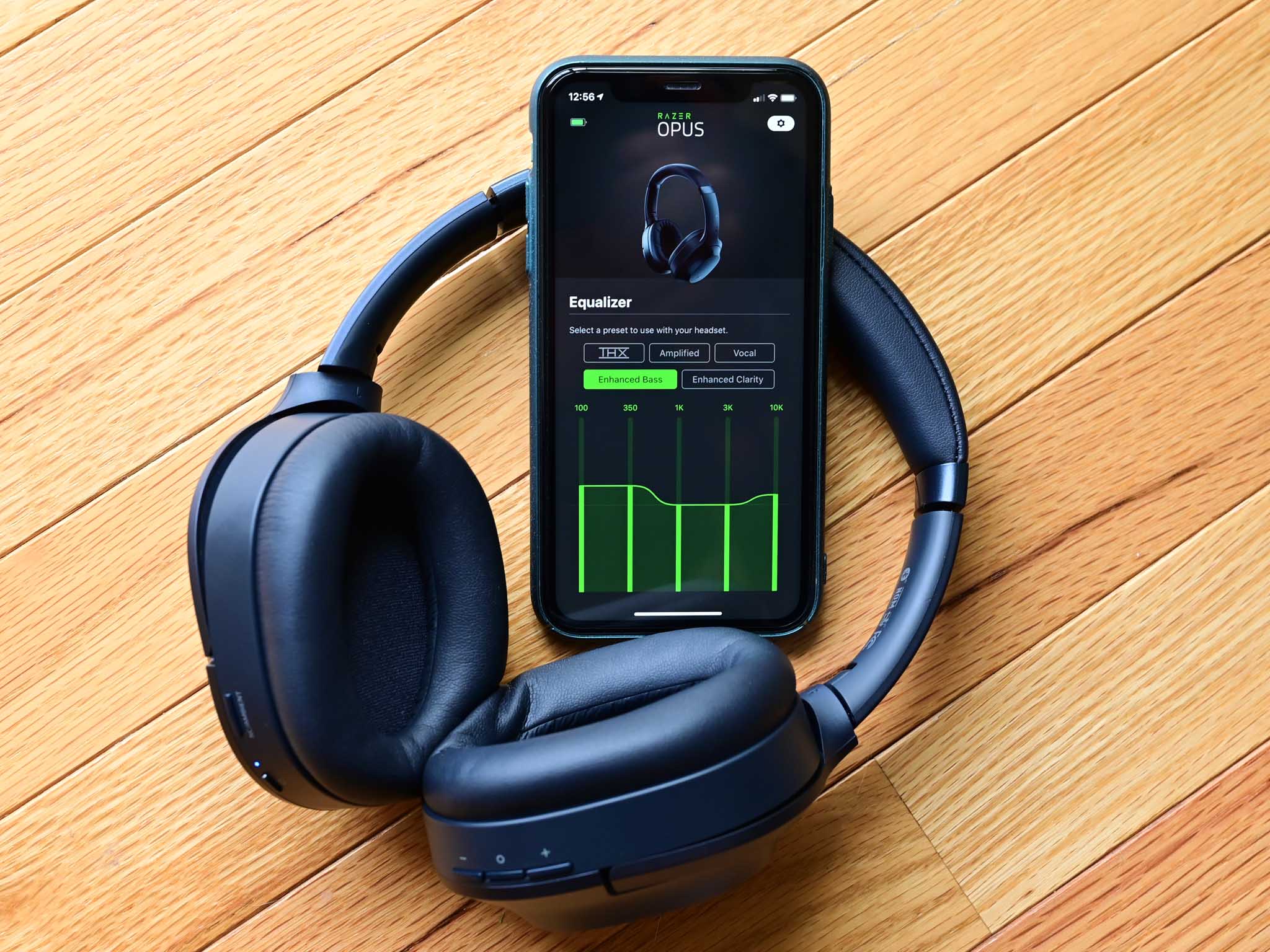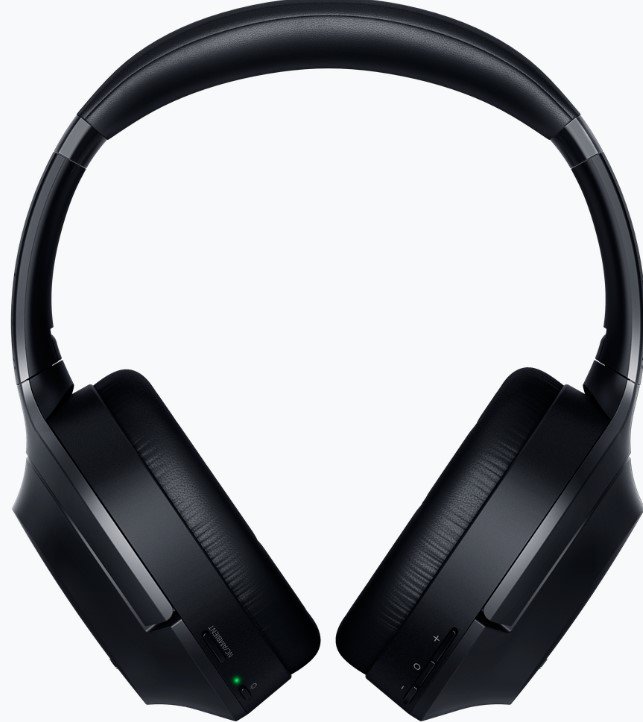Over-the-ear headphones with active noise-canceling (ANC) technology is becoming a highly competitive space these days. It's no wonder Razer, known for its highly-touted gaming peripherals, wants in on the action. Its new Opus THX-certified headphones are its first foray into mainstream accessories not aimed at gaming.
I've spent the last month with the Razer Opus and simply put they're excellent. The $200 ear cans are incredibly comfortable, but the THX-tuned audio punches above its price range, giving Razer a seat at the table with the big players. Here is why.
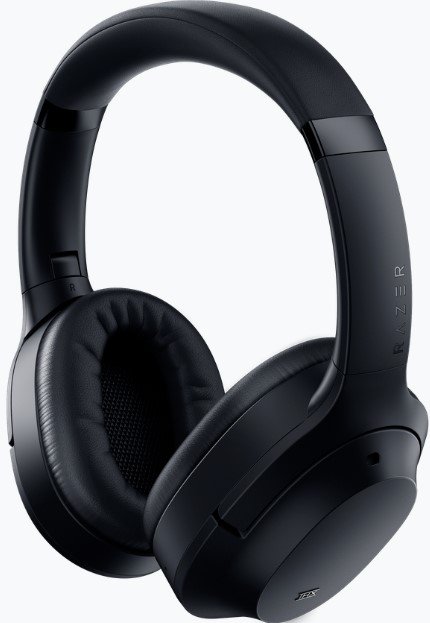
$199Bottom line: For $200, the audio quality, features, and battery life make the Razer Opus a highly competitive over-the-ear headset with active-noise-canceling ability. They're also extremely comfortable.
For
- Very comfortable.
- THX certification delivers
- Excellent battery life
- Competitively priced
- Nice included accessories
Against
- Can only have one active-pairing
- No digital voice assistant support
- Bluetooth 4.2
- Can't customize EQ
Razer Opus Specs and what you get
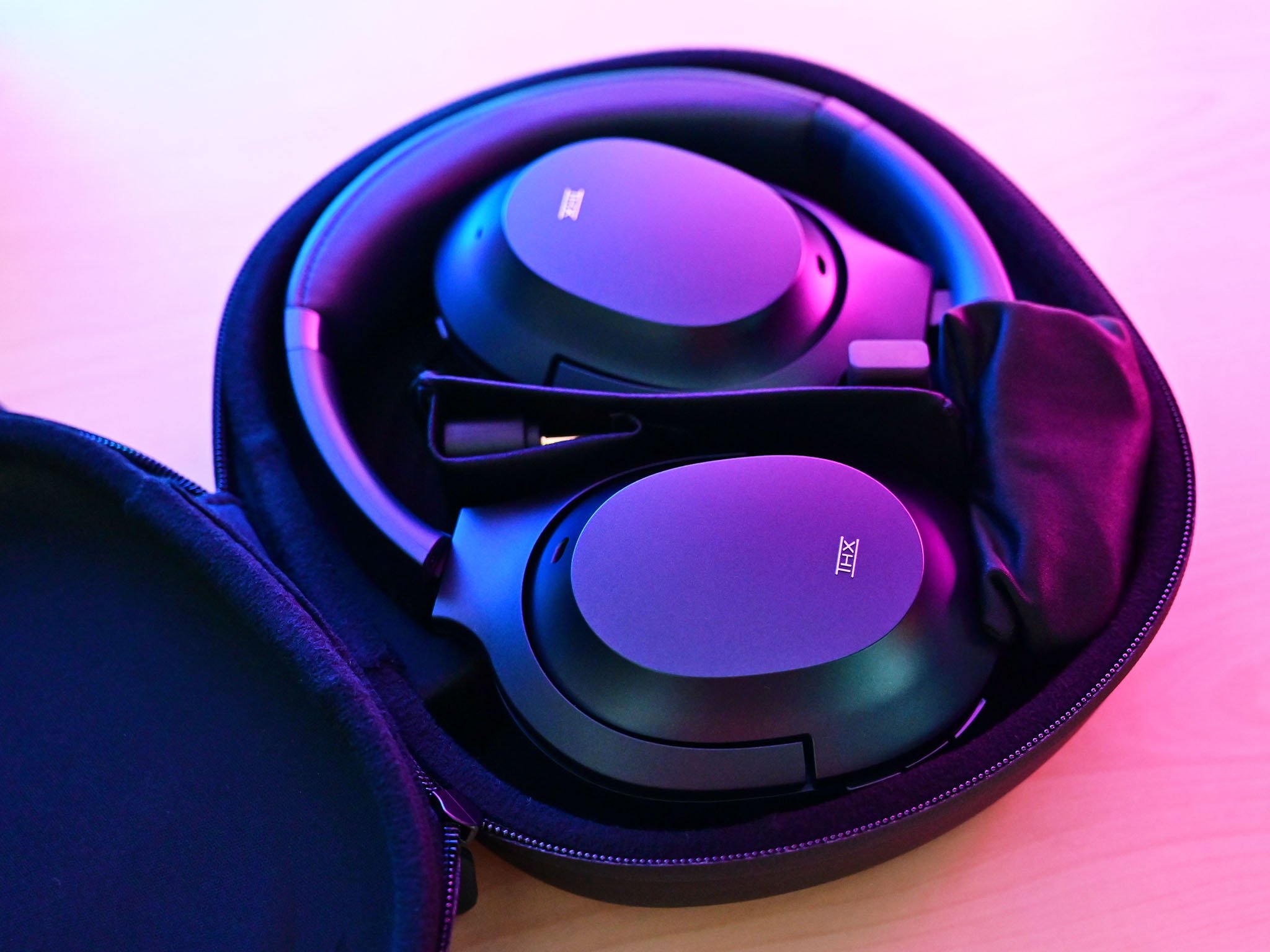
Despite the lower price point, Razer has not cut corners with the Opus for features and specifications:
- Colors: Midnight blue or black
- Drivers: 2x 40mm dynamic
- Weight: 265g
- Frequency response: 20 Hz to 20 kHz
- Microphone: 4 for hybrid ANC, 2 for voice chat
- Style: circumaural (over-the-ear)
- Battery life: Up to 25 hours with ANC on
- Connectivity: Bluetooth 4.2 and 3.5mm
- Codecs: AAC & aptX, 4.2, A2DP, AVRCP, HFP
A few things stand out here. Regarding weight, the Opus is lighter than Surface Headphones 2 (290g), but a bit heavier than Bose's QC 35 IIs (235g). Battery life is not as high as Sony's WH-1000XM3 (30 hours with ANC), but it is rated five hours longer than both Bose and Microsoft's Surface Headphones 2 (both 20 hours with ANC). Frequency response is average but good at 20 Hz (Bose doesn't list its frequency range, but analysis pegs it around 10Hz).
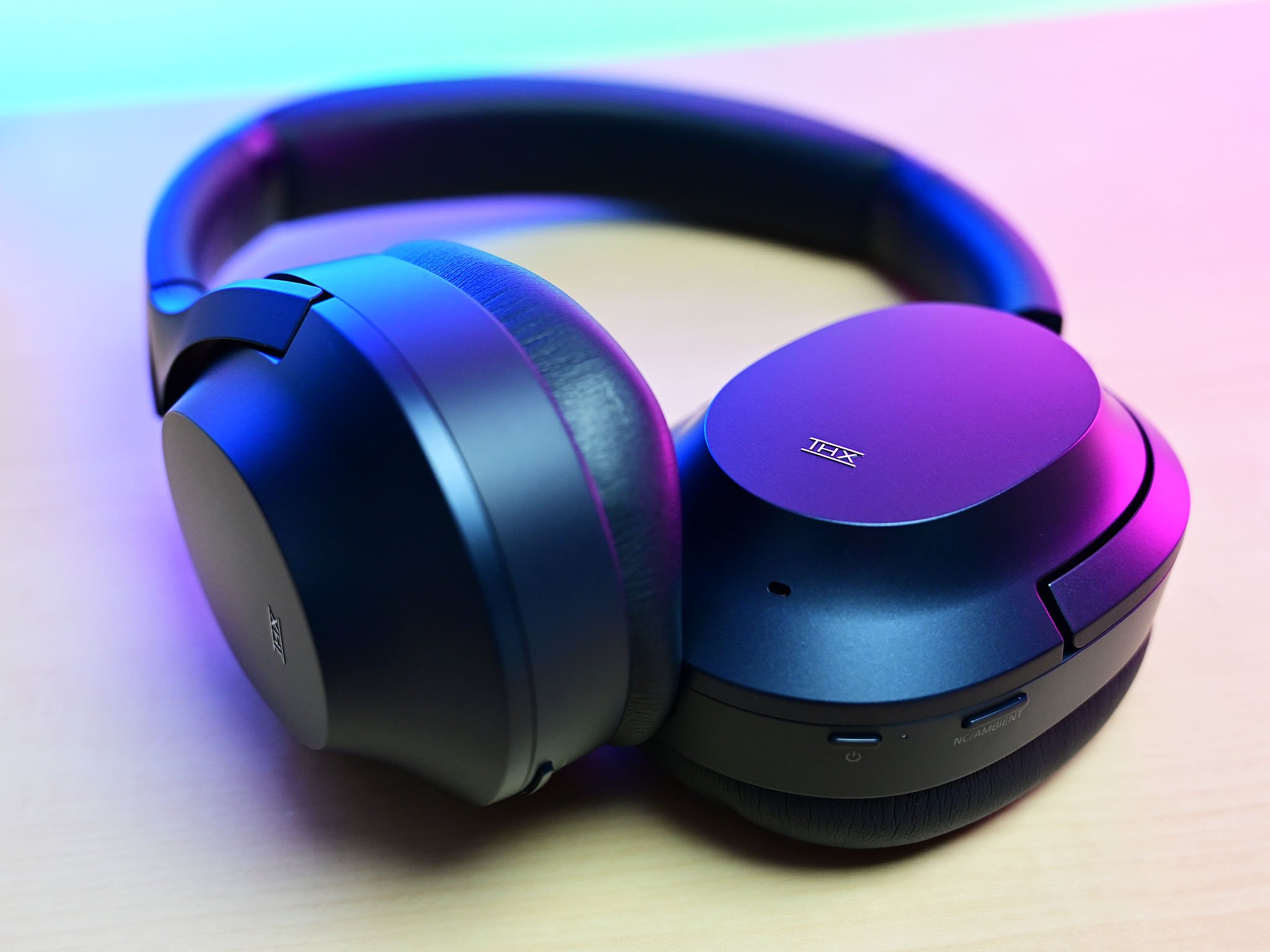
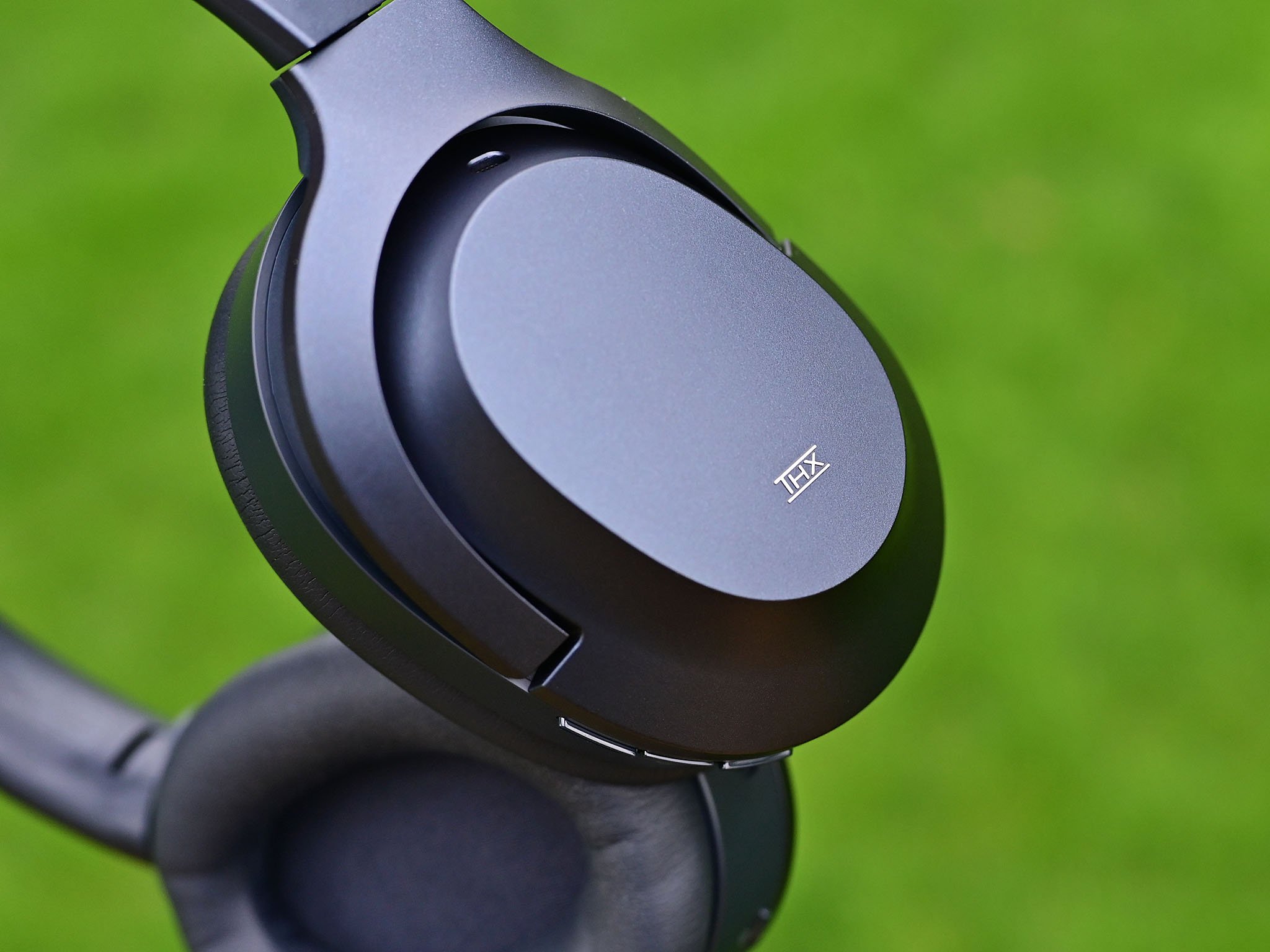
Unlike the Bose, which are a few years old now, the Razer Opus follows Sony and Microsoft with USB Type-C charging (including fast charge).
Bluetooth 4.2 is a bit of a bummer in 2020, but aptX codec support is notable.
There are two colorways for the Opus, including midnight blue (tested here) and black.
Razer also does not skimp on ANC. There are various ways to implement ANC in headphones, and Razer went for the more expensive and effective way: four mics (hybrid), with two on the outside (feedforward ANC) and two on the inside (feedback ANC) of the ear cups.
The Razer Opus ship in an excellent hard-shell case like Bose, Sony, and Microsoft. But unlike Microsoft's Surface Headphones, the Opus fold occupying smaller storage space. Bose and Sony still have smaller carrying cases, but it is not by a considerable amount.
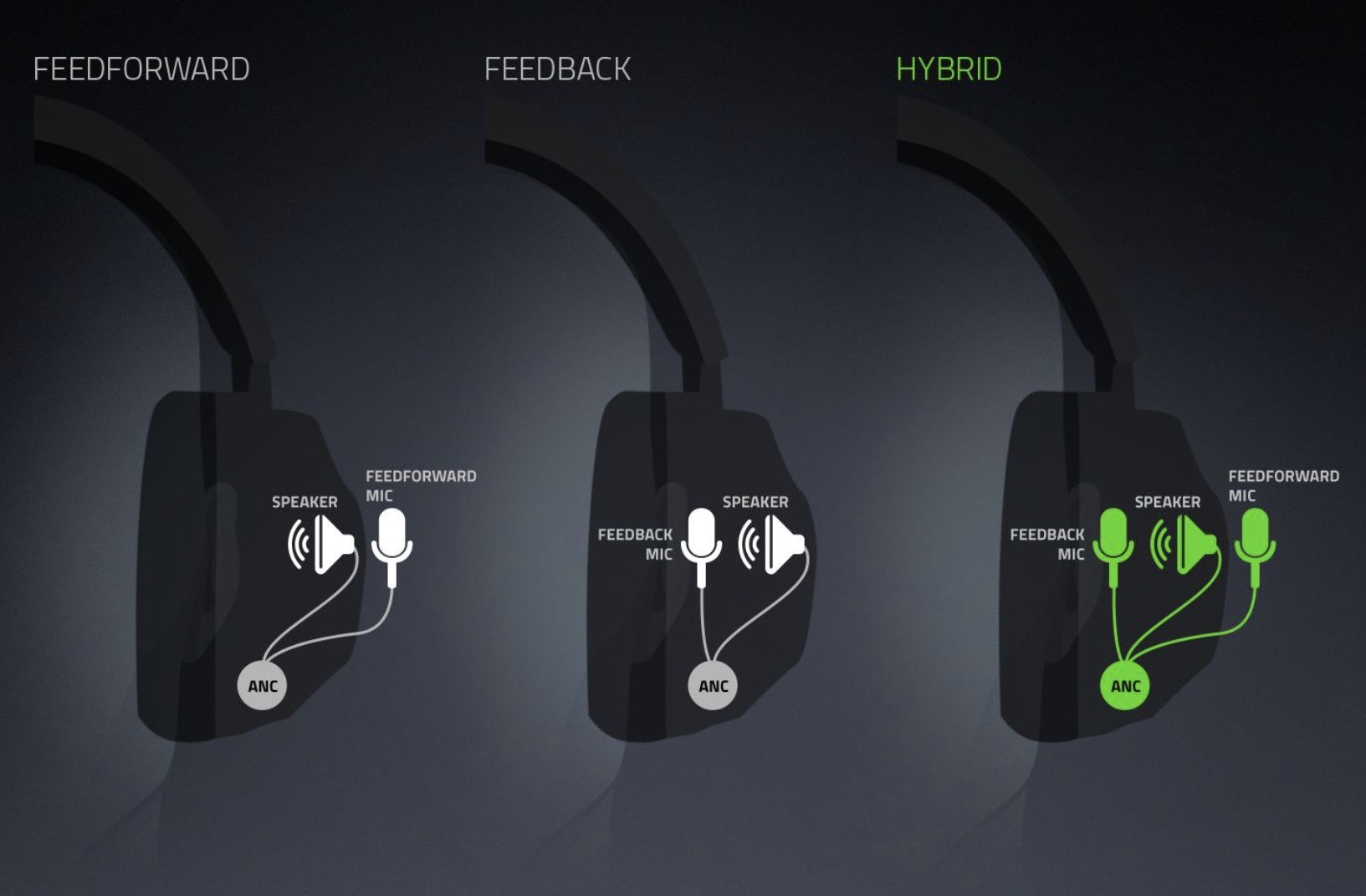
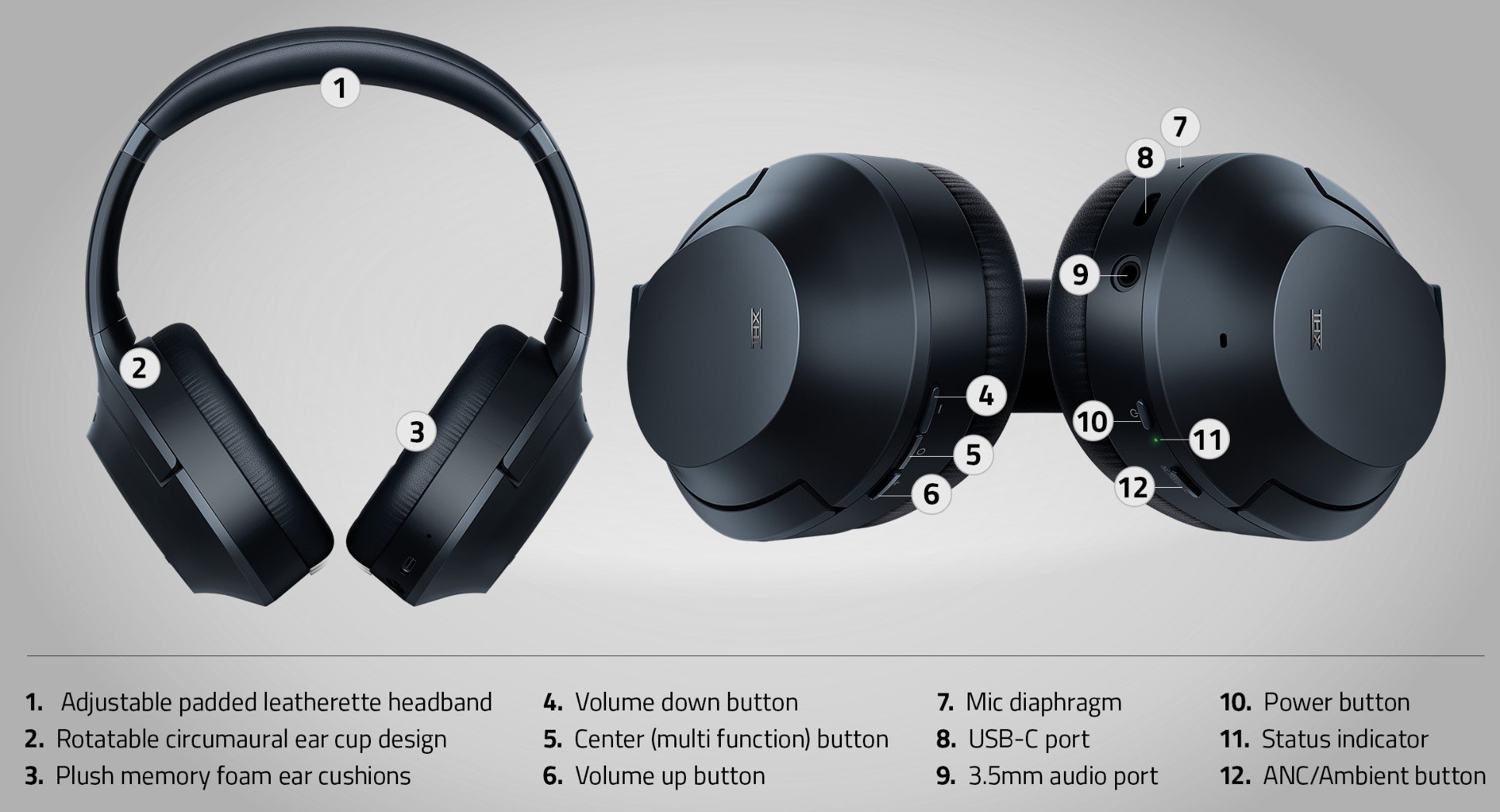
Inside, Razer supplies the typical and expected assortment of accessories, including:
- 3.5mm audio cable
- USB-C charging cable
- USB-A to USB-C adapter
- Airline headphone adapter
It's rare to see them, including airline headphone adapter as many airplanes have switched to a more standardized 3.5mm one, but it's certainly a nice bonus here, especially at this price.
On the left earcup are the Type-C port, 3.5mm headphone jack, power/pair button, and a button for the noise canceling and ambient. Like other ANC headphones, users can press and hold the ambient button to amplify the background sound in a room ("Quick Attention Mode"), making it ideal for someone to talk to you or overhear the flight PA.
On the right earcup is a play/pause/skip button (center) with volume up and down flanking it. The middle button is slightly recessed, letting you easily control your music without looking.
The Opus will also auto-pause and start when placed around your neck and returned to your head, respectively.
Razer Opus how are they?
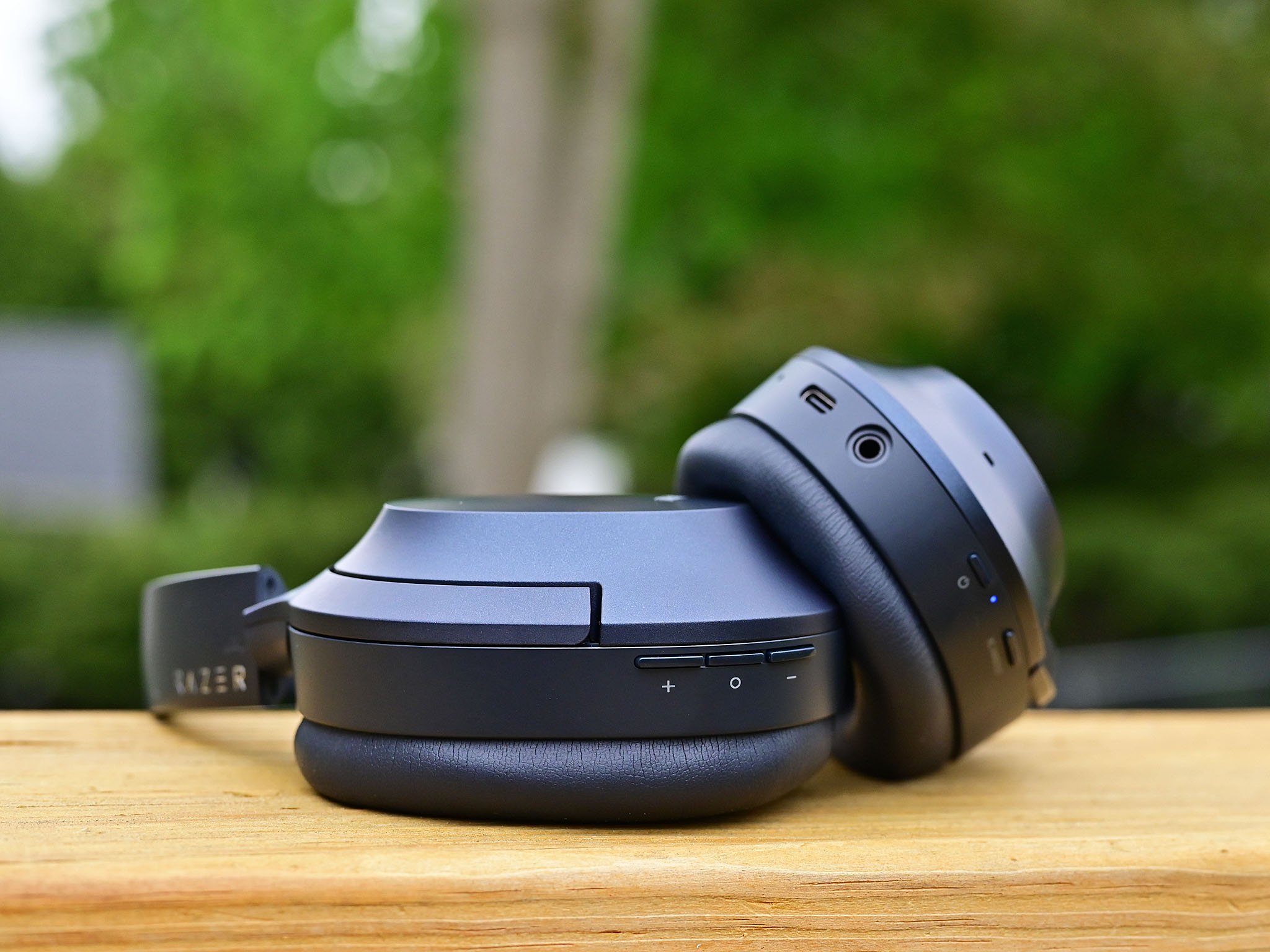
Short take here: these are amazingly comfortable headphones. The balance between the top pressure of the headband, which is padded moderately, and the ear cups is fantastic. I never had any sore spots, and compared to Sony, Bose, and Microsoft, these were the most comfortable for a prolonged duration.
Build quality is average and on par with the Bose QC 35 IIs. The Opus is made from plastic with cups that rotate 90 degrees inward. It would have been nicer if they were like the new Surface Headphones 2, which now rotate 180 degrees.
Audio quality with THX is outstanding. Razer, who technically owns THX, worked closely with its engineers to make sure the Opus meets the standards of THX both in hardware and audio quality. Technically, any headphone manufacturer can earn the THX headphone certification, but Razer is one of the first to do so. It's a rigorous program that starts from prototyping the hardware up through testing and final certification. THX focuses on frequency response, distortion vs. output, and isolation of external noise.

To control the Opus, users can download a specialized app, which lets you custom the sound, set time out, and get firmware updates. The THX preset is one of five available, including amplified, vocal, enhanced bass, and enhanced clarity. While there is an EQ to visualize these changes, there is no way to customize it. Still, considering Bose doesn't even offer any such presets, this isn't a terrible thing.
Battery life is rated at 25 hours, and while I couldn't test that in one sitting, I will comment that it seems in the ballpark with days of usage. Users can also charge with Type-C while using the Opus, including ANC engaged. The same applies when using 3.5mm headphone for audio so long as the Opus is powered.
ANC is also excellent. I tested using a Dolby Atmos surround system while playing a few YouTube videos of ambient talking and background noise. The noise was attenuated as expected, and it even worked well with my typing on a mechanical keyboard where the sound was dampened (though not completely eliminated). However, there is one limitation in that you can't control the levels of ANC; it's either on or off.
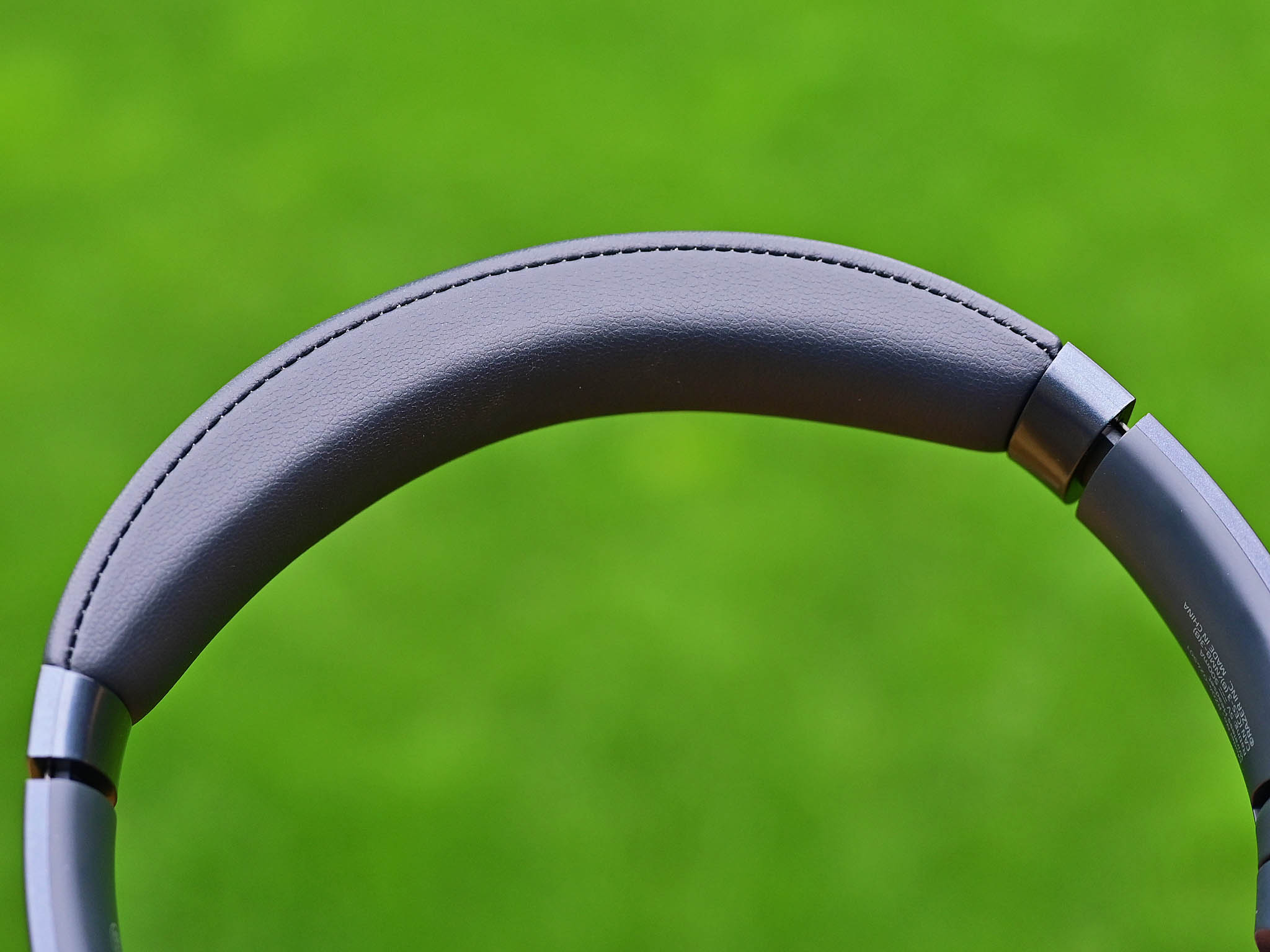
The lack of Bluetooth 5.0 is disappointing, but that standard tends to help headphones with battery life, something the Opus is not lacking. I also had no issues with connectivity. I could walk 35 feet from my phone and not experience any degradation in audio quality, even in a different room.
Unfortunately, the Opus cannot be actively paired to two devices, unlike Surface Headphones and Bose. While you can have multiple pairings, users will need to force disconnect from one device to connect to another, similar to how Sony's WH-1000XM3 operates.
Finally, there is a notable absence of any voice assistant ability with the Opus. Depending on how you feel about such things, this is either a disappointment or a shoulder shrug (it's the latter for me). I presume that the lack of any Google Assistant or Amazon Alexa "built-in" functionality helped keep the cost down as there are some licensing charges there that are ultimately pushed to consumers.
Razer Opus: Bottom line
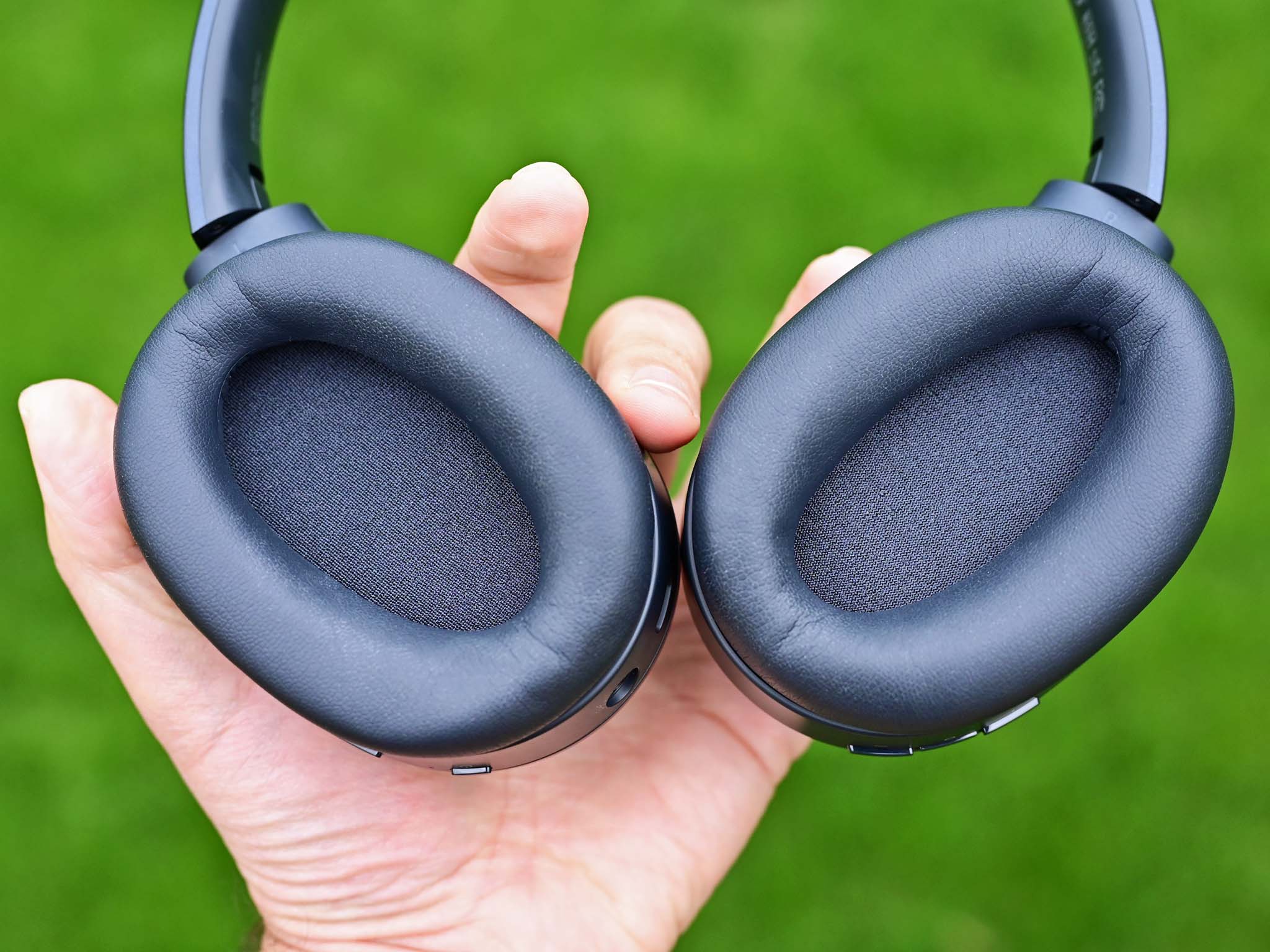
I have quite a few premium noise-canceling headphones at my disposal these days. Each has pros and cons, and there is a particular subjective bias that is involved, especially considering they are all excellent at some level.
The good news is the Razer Opus easily competes at this higher level with Bose, Sony, and Microsoft, which is impressive on a first-generation headset. But really, what makes the Razer stand out from the pack is its price: $200. That cost puts them at $150 less than Bose and Sony and is still $50 cheaper than Microsoft's. That's hard to ignore, and it's not apparent to me why Bose or Sony's would be worth that extra money.
For that cost-savings, you get longer battery life and what I think are the most comfortable of the lot.

The audio is also excellent edging more on a crisp side compared to Surface Headphones 2. While Bose tends to excel in ANC, its actual audio quality for music has always lagged compared to Sony, and even Microsoft.
But being THX certified means that the Opus doesn't over-do the bass (even when set to enhanced bass), which is how some listeners prefer to listen. That's not to say there isn't bass. I'd describe Opus as being rich and balanced.
The most significant potential drawbacks for Opus are the inability to multi-connect, older Bluetooth 4.2, and the lack of a voice assistant for your smartphone or PC. You also cannot dynamically control ANC, unlike other premium headsets. But none of these are deal killers when you balance off the impressive battery life, THX audio quality, effective noise-cancellation, ability to fold, and a nice assortment of accessories in that hard-shell case. The Opus looks classy too, which is a nice deviation from the typical Razer gamer aesthetic.
Overall, it's easy to recommend the Razer Opus, especially if you want to stretch your dollar.

Daniel Rubino is the Editor-in-chief of Windows Central. He is also the head reviewer, podcast co-host, and analyst. He has been covering Microsoft since 2007 when this site was called WMExperts (and later Windows Phone Central). His interests include Windows, laptops, next-gen computing, and wearable tech. He has reviewed laptops for over 10 years and is particularly fond of 2-in-1 convertibles, Arm64 processors, new form factors, and thin-and-light PCs. Before all this tech stuff, he worked on a Ph.D. in linguistics, performed polysomnographs in NYC, and was a motion-picture operator for 17 years.
